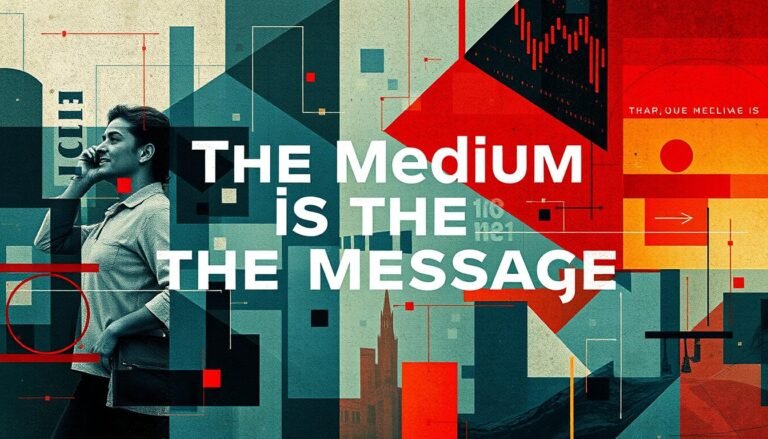Summit vs Conference: What’s the Difference?
In the professional and academic worlds, the terms “summit” and “conference” are often used interchangeably.
But here’s the kicker: knowing which event to attend can make or break your professional growth. It’s not just about showing up; it’s about showing up to the right event at the right time in your career.
This article delves into the hot topic of summits vs conferences, highlighting their characteristics, exclusivity, and the contexts in which they are most effective.
Defining Summits and Conferences
What is a Summit?
Summits are the pressure cookers of the professional world. They’re where ideas get distilled and decisions get made. Let’s break it down further:
- Strategic focus: Summits often tackle big-picture issues. Think climate change, global economic policy, or industry-wide challenges.
- Time-sensitive: Many summits are called in response to urgent issues or crises.
- Power players: Attendees often have the authority to make significant decisions on behalf of their organizations or countries.
- Media attention: Due to their high-profile nature, summits often attract substantial media coverage.
Real-world example: The G20 Summit. This annual meeting brings together leaders from the world’s major economies to discuss global economic challenges. Decisions made here can influence everything from trade policies to climate action plans.
What is a Conference?
Conferences are the lifeblood of professional development and industry networking. They’re where knowledge flows freely and connections are forged. Let’s dive deeper:
- Variety of formats: Conferences often include a mix of keynote speeches, panel discussions, workshops, and networking events.
- Industry updates: Many conferences serve as platforms for companies to announce new products or services.
- Career opportunities: Job fairs and recruitment events are common features of large conferences.
- Continuing education: Many professional associations offer continuing education credits for conference attendance.
Real-world example: South by Southwest (SXSW). This annual conference in Austin, Texas, covers film, interactive media, and music. It’s where Twitter gained early traction and where countless startups have launched their products.
Key Characteristics
| Aspect | Summit | Conference |
| Purpose | Problem-solving, decision-making | Education, networking |
| Size | Small, intimate (usually under 100 attendees) | Large, diverse (can be thousands of attendees) |
| Duration | Short (1-2 days) | Longer (several days to a week) |
| Format | Roundtables, closed-door meetings | Keynotes, workshops, expos |
| Outcomes | Agreements, action plans | Knowledge, connections |
| Frequency | Often annual or called as needed | Usually annual or semi-annual |
| Cost | High (due to exclusivity) | Varies (can be more accessible) |
| Location | Often in politically significant or neutral locations | Convention centers, hotels, or virtual platforms |
| Dress code | Formal (business attire) | Business casual to formal (depends on industry) |
| Follow-up | Direct action items and responsibilities | Personal follow-up on connections and learnings |
Exclusivity and Impact
The exclusivity of summits serves a specific purpose. It’s not about elitism; it’s about creating an environment where decision-makers can speak frankly and work efficiently.
- Trust-building: The closed nature of summits allows for off-the-record discussions that can build trust between parties.
- Rapid decision-making: With key players all in one room, decisions can be made quickly.
- Long-term relationships: The intimate setting fosters relationships that can last beyond the summit itself.
Conferences, with their inclusive nature, have a different kind of impact:
- Democratization of knowledge: Attendees from various backgrounds can access cutting-edge information.
- Innovation catalyst: The mix of different perspectives can spark new ideas and collaborations.
- Industry pulse: Conferences often serve as a barometer for the current state and future direction of an industry.
Both types of events can have ripple effects that extend far beyond the attendees. A summit might result in a new international treaty, while a conference could inspire an entrepreneur to start a company that changes an entire industry.
Choosing Between a Summit and a Conference
Making the right choice between a summit and a conference can significantly impact your professional journey. Here are some more factors to consider:
1. Your expertise level:
- Expert in your field? → Summit (You can contribute meaningful insights)
- Still learning the ropes? → Conference (You’ll benefit from the educational aspects)
2. Your networking goals:
- Want to connect with high-level decision-makers? → Summit
- Aiming to build a broad professional network? → Conference
3. Your budget:
- Have a significant budget or sponsorship? → Summit (They’re often more expensive)
- Working with limited funds? → Conference (More options at various price points)
4. Your learning style:
- Prefer intense, focused discussions? → Summit
- Enjoy a variety of learning formats? → Conference
5. Your career stage:
- Mid to late career, looking to influence industry direction? → Summit
- Early to mid-career, focusing on skill development? → Conference
6. Your organization’s needs:
- Representing your company in high-level negotiations? → Summit
- Seeking new vendors or partners? → Conference
Remember, these aren’t hard and fast rules. Your specific situation might call for a different approach. Trust your instincts and do your research on each event before making a decision.
Case Studies: Summits vs. Conferences in Action
Let’s look at some real-world examples to illustrate the differences:
Summit Example: The Paris Climate Summit (COP21)
- Purpose: To negotiate a global agreement on reducing carbon emissions
- Attendees: World leaders, top climate scientists, and high-level policymakers
- Outcome: The legally binding Paris Agreement on climate change mitigation
- Impact: Set global targets for reducing greenhouse gas emissions
This summit demonstrates the power of bringing decision-makers together to address a critical global issue.
Conference Example: Adobe MAX
- Purpose: To showcase new Adobe products and inspire creative professionals
- Attendees: Designers, photographers, videographers, and other creatives
- Format: Keynote presentations, hands-on workshops, networking events
- Outcome: Attendees learn new skills, get inspired, and network with peers
- Impact: Influences trends in creative industries and drives adoption of new technologies
This conference illustrates how a large-scale event can serve educational and networking purposes while also advancing a company’s business goals.
Preparing for a Summit or Conference
Whether you’re attending a summit or a conference, preparation is key to making the most of the experience. Here are some tips:
For Summits:
- Do your homework: Research the key issues and other attendees thoroughly.
- Prepare your talking points: Know what you want to communicate and achieve.
- Bring supporting materials: Have data and documents ready to support your position.
- Practice active listening: Be ready to absorb and respond to others’ viewpoints.
- Follow up promptly: Act on decisions and maintain new high-level connections.
For Conferences:
- Plan your schedule: Review the agenda and choose sessions that align with your goals.
- Set networking targets: Identify key people or companies you want to connect with.
- Prepare questions: For speakers, potential mentors, or interesting attendees.
- Bring plenty of business cards: Old school, but still effective in many industries.
- Take good notes: Capture key insights and action items for when you return to work.
The Role of Technology in Modern Summits and Conferences
Technology is reshaping how we approach both summits and conferences:
1. Mobile apps:
- Event-specific apps help attendees navigate schedules and connect with others.
- They can also facilitate real-time polling and Q&A sessions.
2. Live streaming:
- Allows for greater participation, especially for high-profile summit sessions or conference keynotes.
- Increases the reach and impact of the event.
3. Social media integration:
- Hashtags and social walls encourage online engagement and discussion.
- Can extend the conversation beyond the physical event space.
4. Virtual reality (VR) and augmented reality (AR):
- VR can create immersive experiences for remote attendees.
- AR can enhance on-site experiences with interactive displays or navigation aids.
5. Artificial Intelligence:
- AI-powered chatbots can answer attendee questions and provide personalized recommendations.
- Machine learning algorithms can suggest relevant sessions or networking opportunities.
The Future of Summits and Conferences
As we look ahead, both summits and conferences are evolving to meet changing needs and technological advancements. Let’s explore how these gatherings might transform in the coming years:
Blending the lines
We’re seeing a trend towards hybrid events that combine elements of both summits and conferences. These “summit-ferences” aim to balance exclusive decision-making sessions with broader educational components. This approach allows for more diverse participation while still maintaining space for high-level discussions.
Virtual and hybrid options
The shift to online gatherings, accelerated by recent global events, is here to stay. Expect more events offering a mix of in-person and virtual attendance, increasing accessibility and global participation. This trend opens up new possibilities for international collaboration and knowledge sharing.
Sustainability focus
Both summits and conferences are becoming more environmentally conscious. This includes greener venue choices, locally-sourced catering, and carbon-offset programs for travel. Organizers are increasingly aware of their events’ environmental impact and are taking steps to minimize it.
Enhanced networking technologies
AI-powered matchmaking tools are revolutionizing how attendees connect, especially at larger conferences. Virtual reality spaces may soon offer more immersive networking experiences, bridging the gap between in-person and remote attendance. These technologies aim to recreate the serendipitous connections that often occur at physical events.
Micro-events and continuous engagement
Some organizations are moving away from single, large annual gatherings. Instead, they’re hosting a series of smaller, more focused events throughout the year, maintaining ongoing dialogue and progress. This approach allows for more agile response to industry changes and continuous learning opportunities.
Outcome-driven approach
There’s growing emphasis on measurable results, for both summits and conferences. Expect more structured follow-up processes and implementation strategies to ensure real-world impact. Organizers and attendees alike are looking for concrete outcomes and actionable insights from these events.
Personalization at scale
Large conferences are increasingly using data to tailor experiences for individual attendees. This could mean personalized agendas, recommended sessions, or curated networking opportunities. The goal is to make even the largest events feel relevant and valuable to each participant.
Interactive and participatory formats
Traditional lecture-style presentations are giving way to more engaging formats. Look for more workshops, hackathons, and collaborative problem-solving sessions, even in summit settings. These formats encourage active participation and practical application of knowledge.
As these trends unfold, the core purposes of summits and conferences remain intact. Summits will continue to drive high-level decision-making, while conferences foster broad learning and networking. The key difference will be in how these goals are achieved, with technology and innovative formats enhancing the experience for all participants.
Final Thoughts
Understanding the nuances between summits and conferences empowers you to make strategic decisions about your professional development and networking efforts. Summits offer focused, high-level engagement on specific issues, while conferences provide broad learning and networking opportunities across an industry or field.
As you navigate your career, you’ll likely find value in both types of events at different times. A conference might be perfect for broadening your knowledge base and making initial industry connections. Later in your career, a summit could be the ideal platform for influencing industry direction or policy.
Remember, the most successful professionals are those who can adapt their approach based on the context. Sometimes you need the laser focus of a summit, and other times the expansive opportunities of a conference.
Whichever type of event you choose, go in with clear goals, an open mind, and a willingness to engage. The connections you make and the knowledge you gain could be the catalyst for the next big step in your career.







